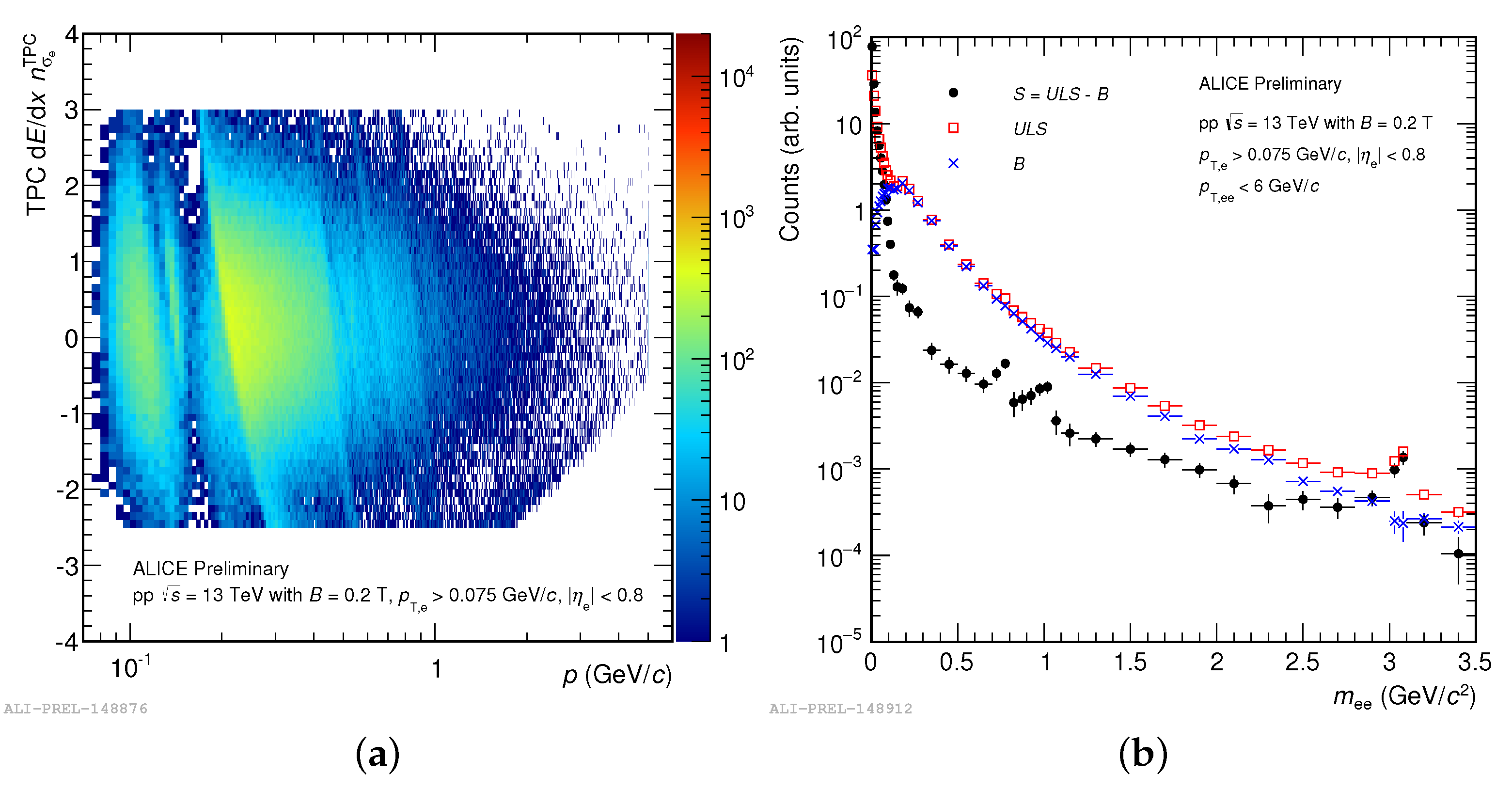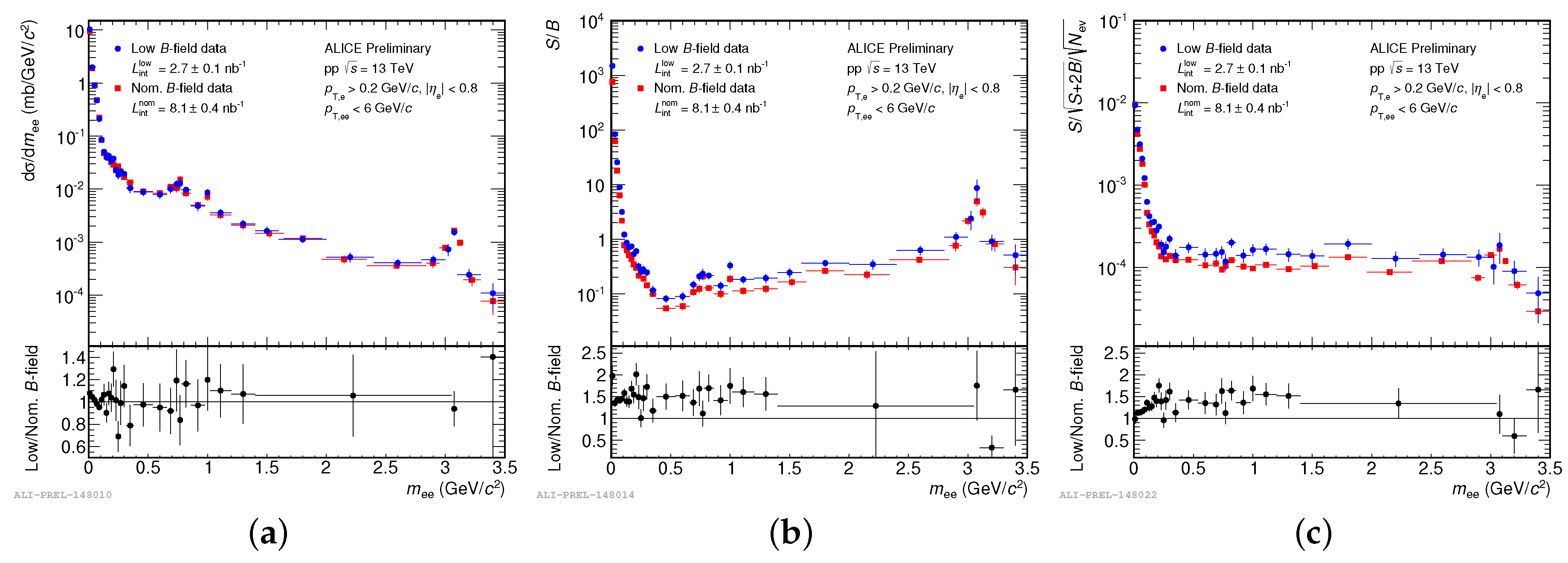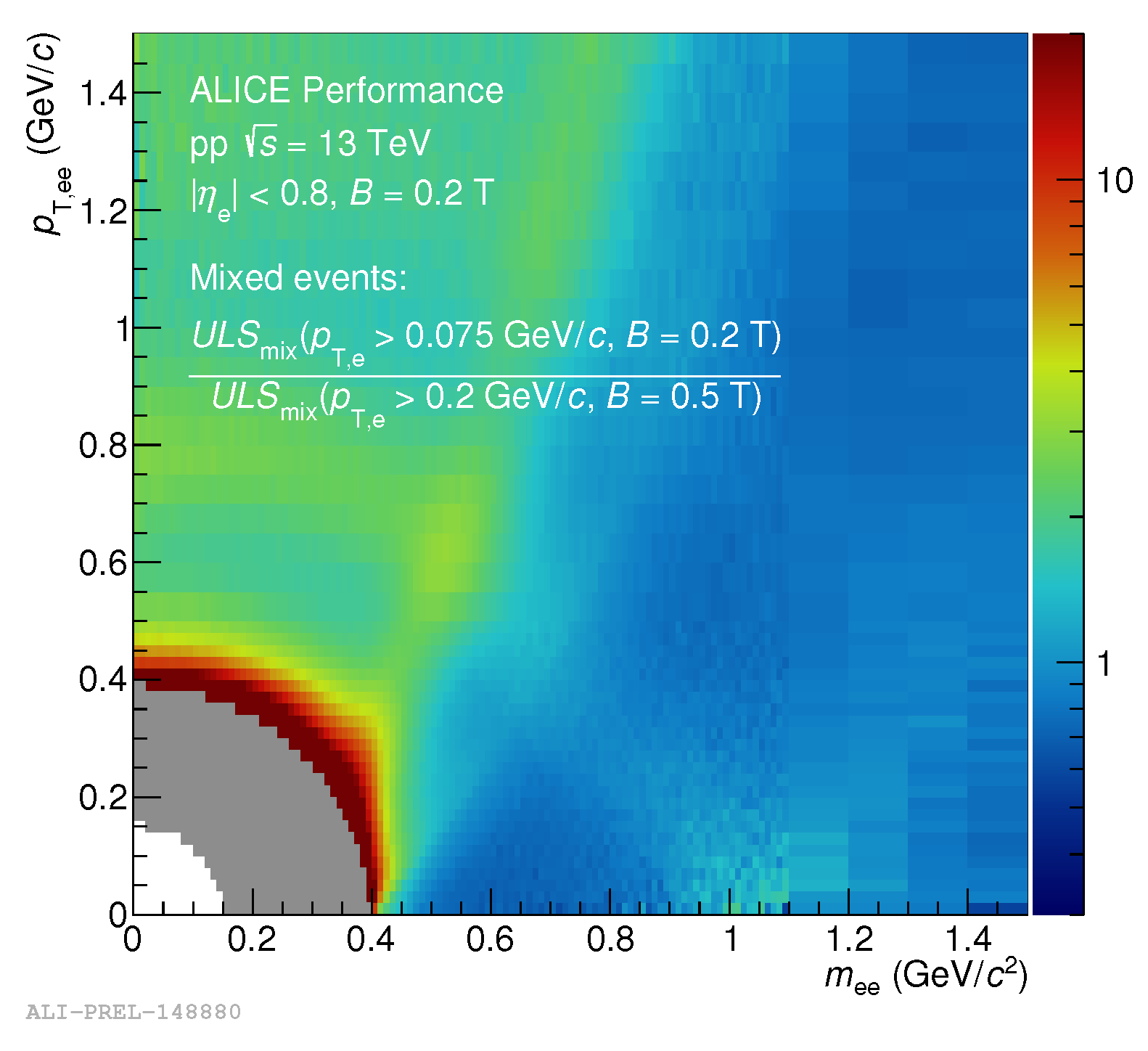Dielectron Production in pp Collisions at √s = 13 TeV Measured in a Dedicated Low Magnetic-Field Setting with ALICE †
Abstract
:1. Introduction
2. Data Analysis
3. Results
3.1. Comparison to the Published Nominal-Field Analysis
3.2. Acceptance Gain at Low Field
3.3. Comparison to the AFS Results
References
- Aamodt, K.; Quintana, A.A.; Achenbach, R.; Acounis, S.; Adamová, D.; Adler, C.; Aggarwal, M.; Agnese, F.; Rinella, G.A.; Ahammed, Z.; et al. The ALICE experiment at the CERN LHC. J. Instrum. 2008, S08002. [Google Scholar] [CrossRef]
- Hedberg, V. Production of Positrons with Low Transverse Momentum and Low-Mass Electron-Positron Pairs in Proton-Proton Collisions at a Center-of-Mass Energy of 63 GeV. Ph.D. Thesis, Lund University, Lund, Sweden, 1987. [Google Scholar]
- Acharya, S.; Torales-Acosta, F.; Adamová, D.; Adolfsson, J.; Aggarwal, M.M.; Rinella, G.A.; Agnello, M.; Agrawal, N.; Ahammed, Z.; Ahn, S.U.; et al. Dielectron and heavy-quark production in inelastic and high-multiplicity proton-proton collisions at = 13 TeV. arXiv 2018, arXiv:1805.04407. [Google Scholar]
- Acharya, S.; Adamová, D.; Adolfsson, J.; Aggarwal, M.M.; Rinella, G.A.; Agnello, M.; Agrawal, N.; Ahammed, Z.; Ahn, S.U.; Aiola, S.; et al. Neutral pion and η meson production in p-Pb collisions at =5.02 TeV. Eur. Phys. J. C 2018, 78, 624. [Google Scholar] [CrossRef]




Publisher’s Note: MDPI stays neutral with regard to jurisdictional claims in published maps and institutional affiliations. |
© 2019 by the author. Licensee MDPI, Basel, Switzerland. This article is an open access article distributed under the terms and conditions of the Creative Commons Attribution (CC BY) license (https://creativecommons.org/licenses/by/4.0/).
Share and Cite
Jung, J., on behalf of the ALICE Collaboration. Dielectron Production in pp Collisions at √s = 13 TeV Measured in a Dedicated Low Magnetic-Field Setting with ALICE. Proceedings 2019, 10, 50. https://doi.org/10.3390/proceedings2019010050
Jung J on behalf of the ALICE Collaboration. Dielectron Production in pp Collisions at √s = 13 TeV Measured in a Dedicated Low Magnetic-Field Setting with ALICE. Proceedings. 2019; 10(1):50. https://doi.org/10.3390/proceedings2019010050
Chicago/Turabian StyleJung, Jerome on behalf of the ALICE Collaboration. 2019. "Dielectron Production in pp Collisions at √s = 13 TeV Measured in a Dedicated Low Magnetic-Field Setting with ALICE" Proceedings 10, no. 1: 50. https://doi.org/10.3390/proceedings2019010050
APA StyleJung, J., on behalf of the ALICE Collaboration. (2019). Dielectron Production in pp Collisions at √s = 13 TeV Measured in a Dedicated Low Magnetic-Field Setting with ALICE. Proceedings, 10(1), 50. https://doi.org/10.3390/proceedings2019010050



